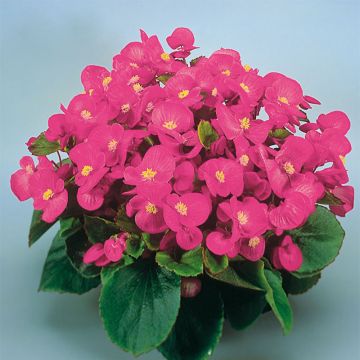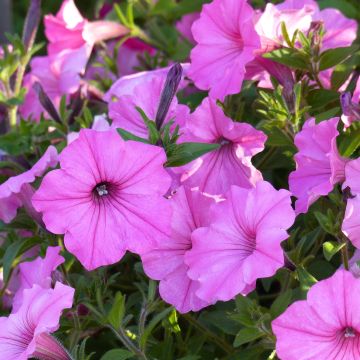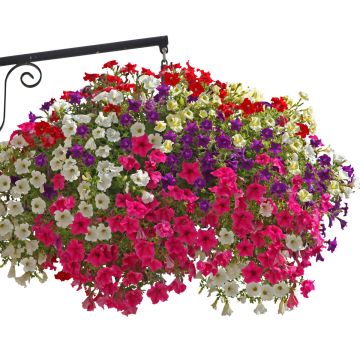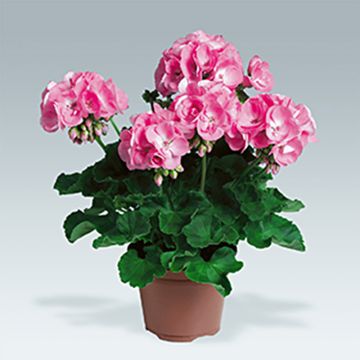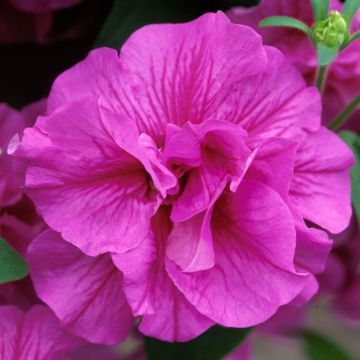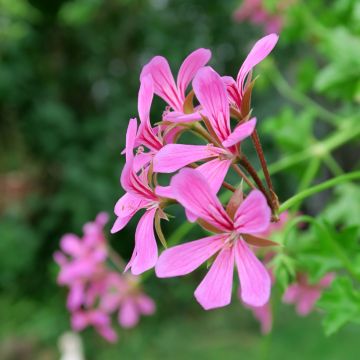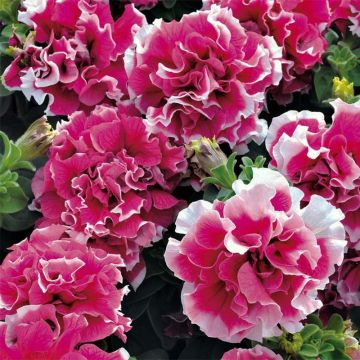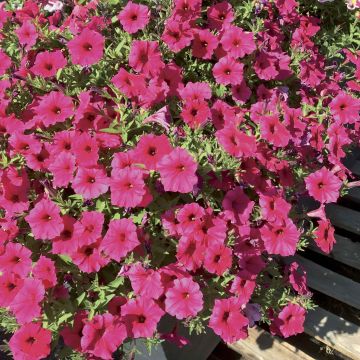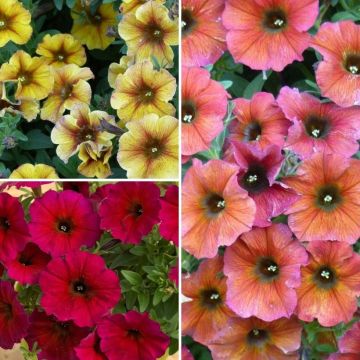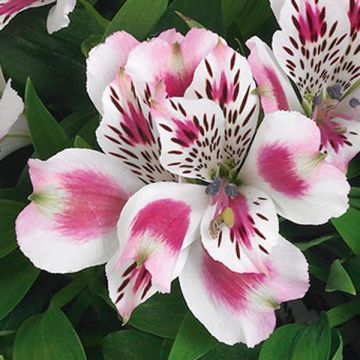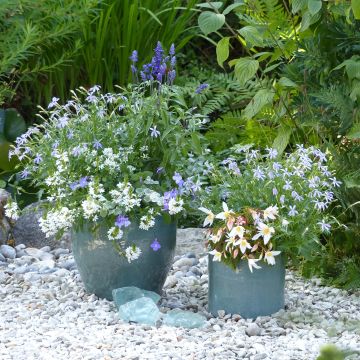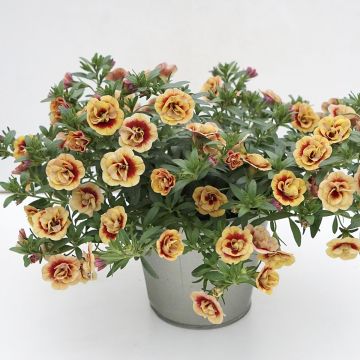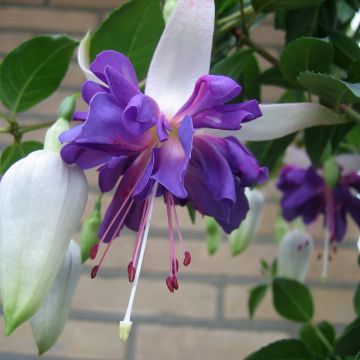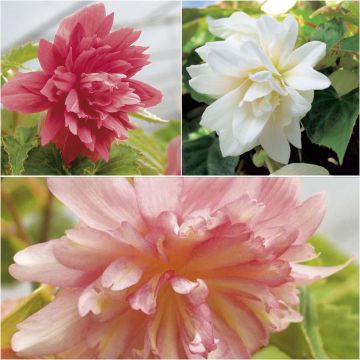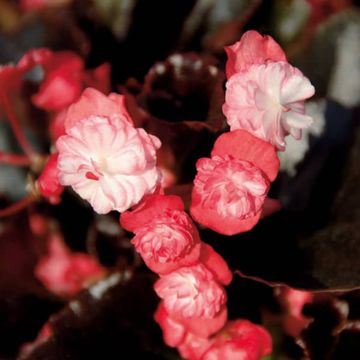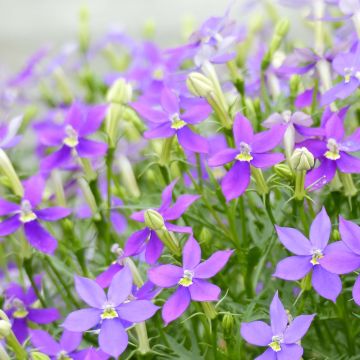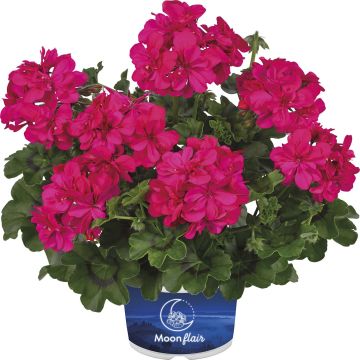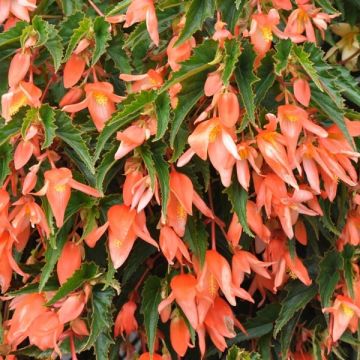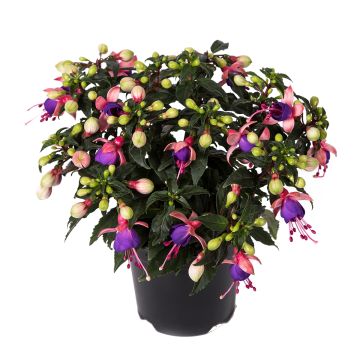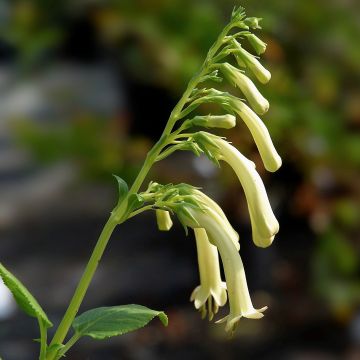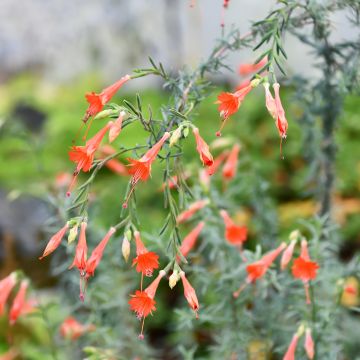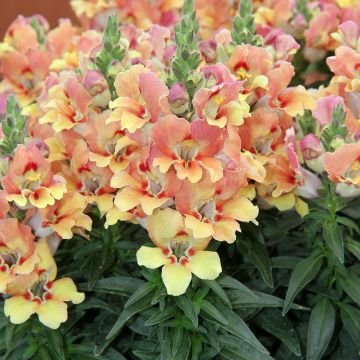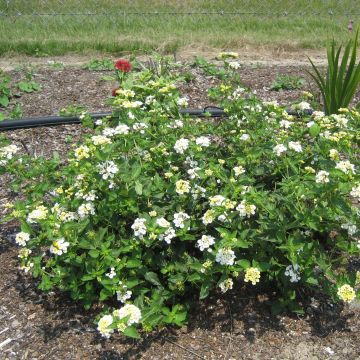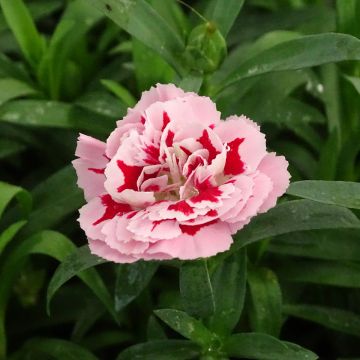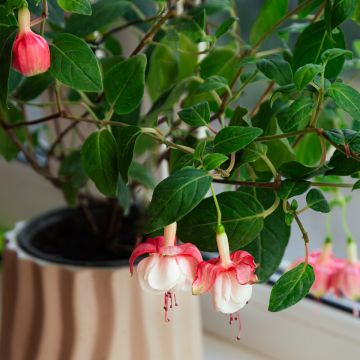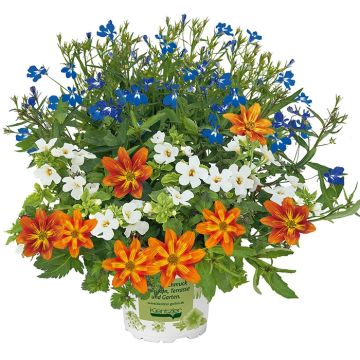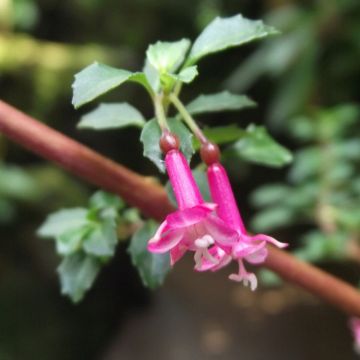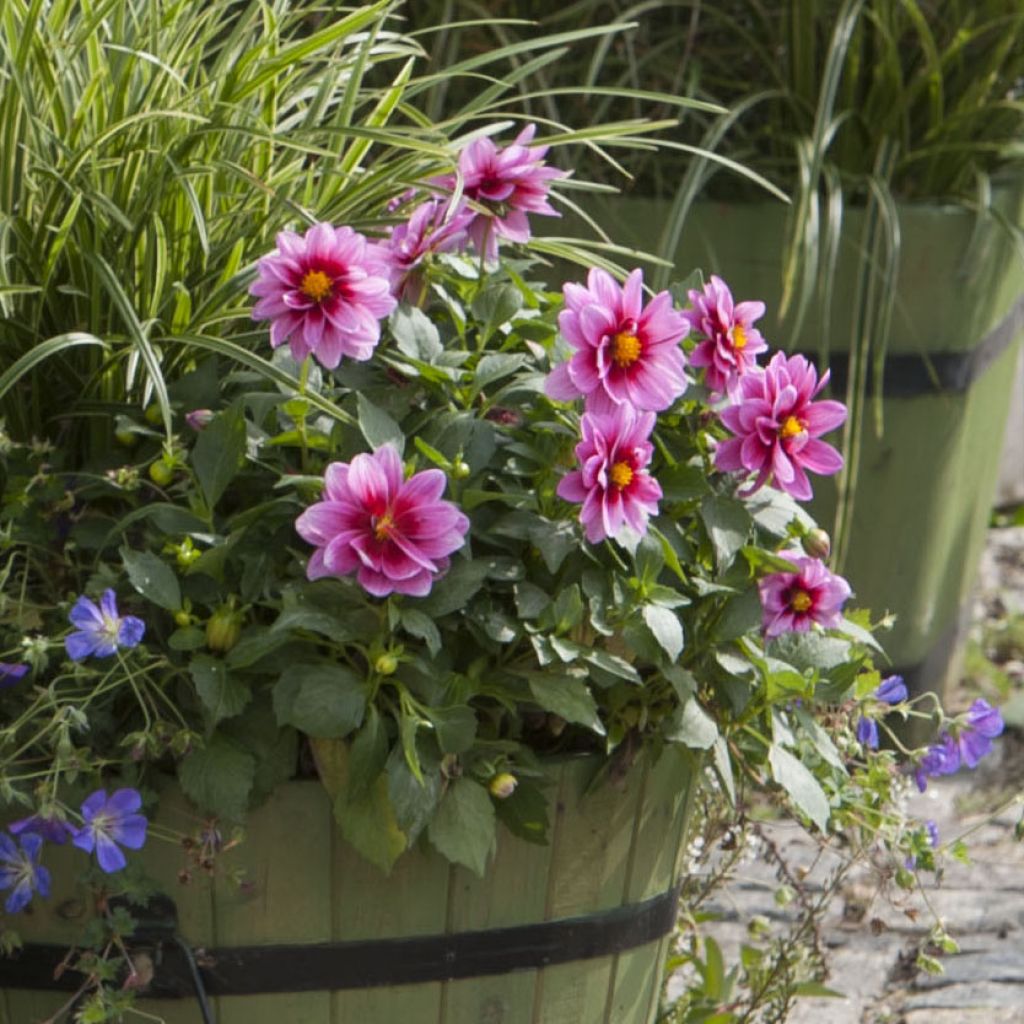

Dahlia Dalaya Yogi - Dahlia des Jardins Semi-double Nain
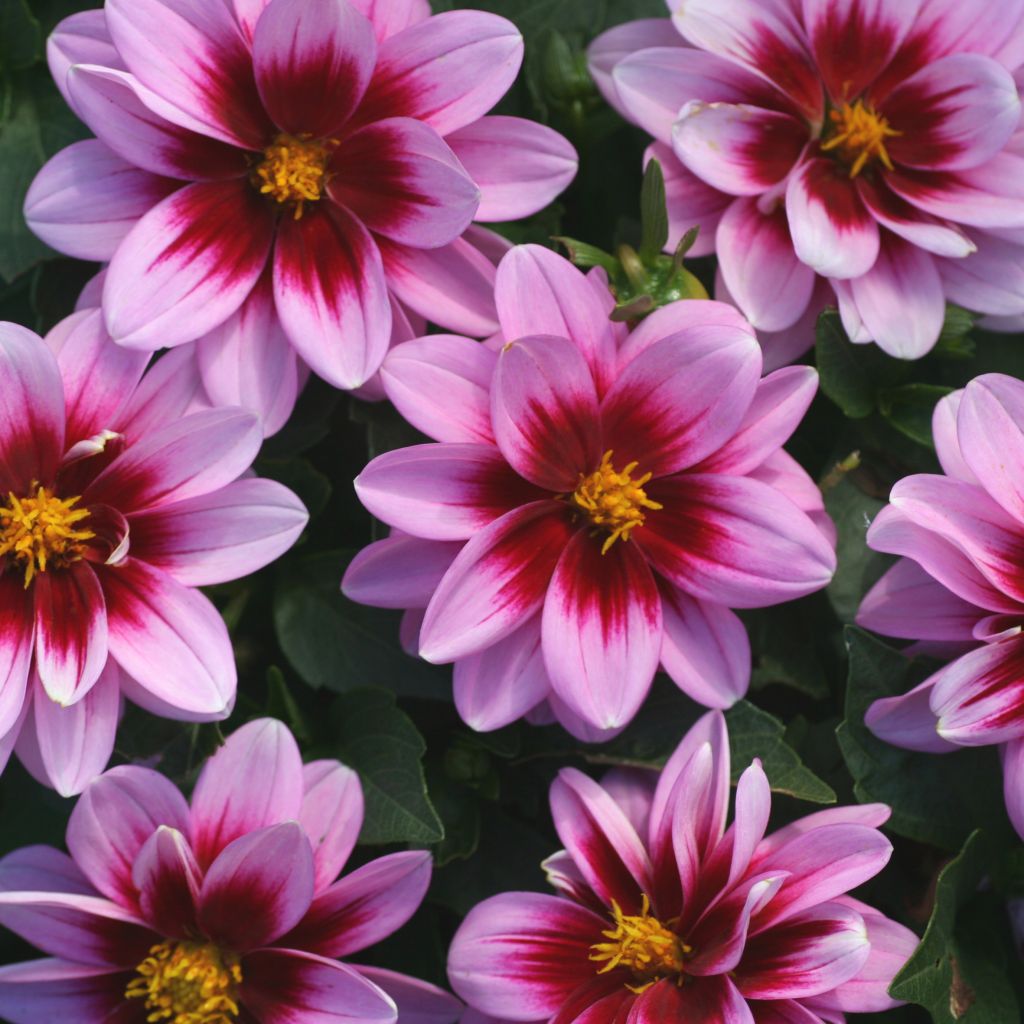

Dahlia Dalaya Yogi - Dahlia des Jardins Semi-double Nain
Dahlia Dalaya Yogi
Dahlia Sel® Dalaya Yogi
Dahlia
Lovely dahlia
Martine SCALBERT, 01/10/2016
Why not try an alternative variety in stock?
View all →Order in the next for dispatch today!
Dispatch by letter from €3.90.
Delivery charge from €5.90 Oversize package delivery charge from €6.90.
Current delivery delay: 1 day.
More information
This item is not available in your country.
Schedule delivery date,
and select date in basket
This plant carries a 6 months recovery warranty
More information
We guarantee the quality of our plants for a full growing cycle, and will replace at our expense any plant that fails to recover under normal climatic and planting conditions.
From €5.90 for pickup delivery and €6.90 for home delivery
Express home delivery from €8.90.

Does this plant fit my garden?
Set up your Plantfit profile →
Description
Dahlia 'Dalaya Yogi' is a variety with a compact and bushy habit, boasting early and endless flowering. It charms with its lively flowers in pale-pink semi-double corollas shaded with a darker pink centre. It is a recent variety, awarded for its foliage that is resistant to powdery mildew and for its exceptionally long flowering, from spring to frost. Planted en masse, it will find its place in all gardens, even the smallest ones. It also works well on patios or balconies.
Dahlias belong to the Asteraceae family. They are originally from the high plateaus of Mexico. At present, the 20,000 horticultural varieties obtained by humans have invaded gardens all over the world.
The 'Dalaya Yogi' variety is a recently selected dwarf dahlia in Germany, and was awarded the Fleuroselect gold medal in 2013. The plant will not exceed 40cm (16in) in all directions. It has a bushy, erect, and compact habit, which does not require staking. Flowering takes place from May to October-November. The capitula take the form of single semi-double corollas composed of two rows of fully opened ligules in fresh and tender pink colours, shaded with a strong pink halo surrounding the central yellow disc. The branched stems are hollow. The leaves are opposite and divided into 3 or 5 very denticulate lobes. The leaves and stems are dark green.
Remove faded flowers to encourage new blooms and extend the flowering period. Even better, cut them regularly to create attractive bouquets by combining various varieties.
They will form colourful spots in the front of borders, along with echinaceas, heleniums, and cosmos, for example. Also consider combining them with Pennisetum villosum, a lovely feathery grass that will bring softness and delicacy to the decor. This variety is particularly suitable for container gardening, providing colour on patios and balconies.
Our young plug plants are professional products reserved for experienced gardeners. Upon receipt, transplant and store them in shelters (veranda, greenhouse, cold frame) at a temperature above 14°C (57.2°F) for a few weeks before being planted outdoors once the risk of frost has passed.
Report an error about the product description
Dahlia Dalaya Yogi in pictures
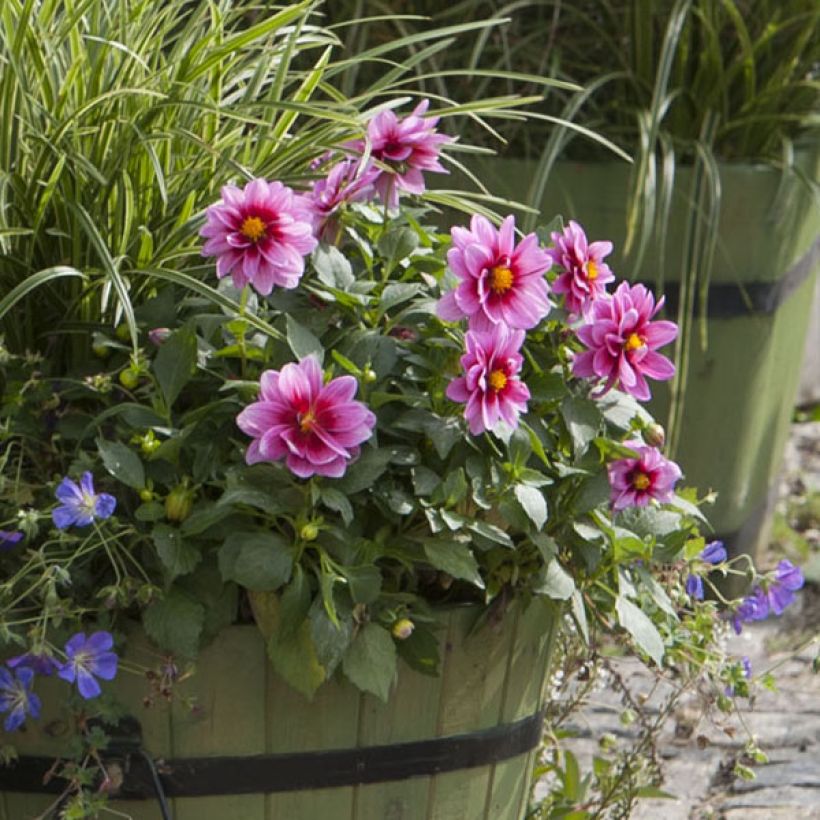

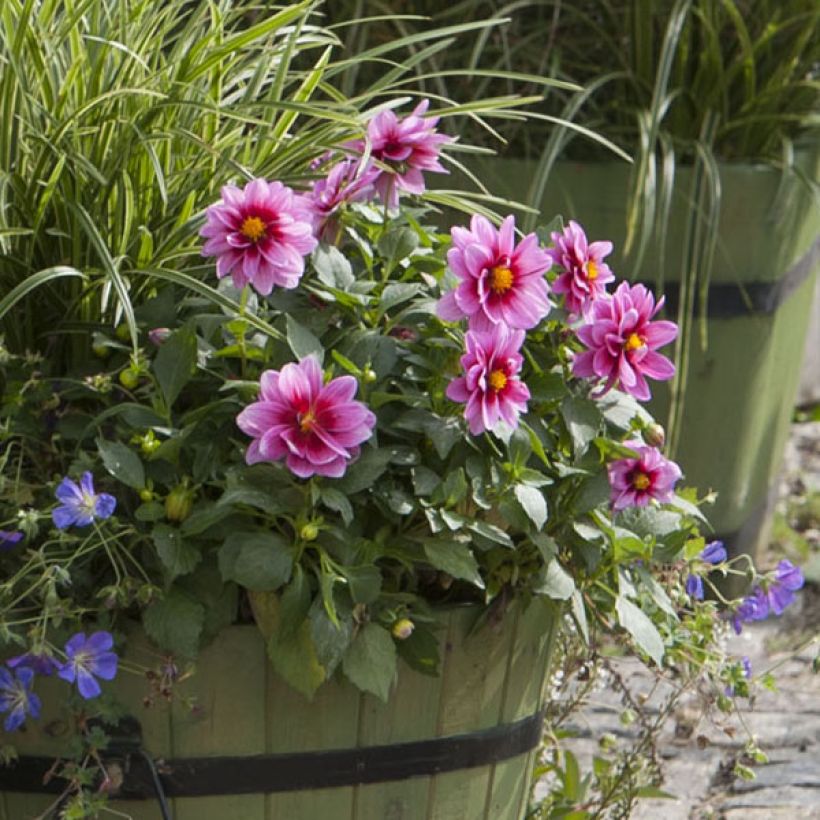

Flowering
Foliage
Plant habit
Botanical data
Dahlia
Sel® Dalaya Yogi
Asteraceae
Dahlia
Cultivar or hybrid
Other Annuals A to Z
Planting and care
Dahlia 'Dalaya Yogi' is easy to grow in all regions. For abundant flowering, it is wise to follow a few simple rules. Plant it in full sun as soon as the last frost has passed. Rich, moist, and well-drained soil is perfect. However, stagnant moisture will promote tuber rot. Amend the soil with compost and sand, if necessary. Work the soil deeply and enrich it with crushed horn or dehydrated blood, for example. At the end of planting, water once abundantly, then repeat this watering regularly during the first 6 weeks to aid root development.
Dahlias are sensitive to cold, so they need to be overwintered. Dig the tubers up when the first frost has blackened the foliage. Carefully remove the tubers. Remove as much soil as possible. Let the foliage dry so that the tubers can replenish their reserves. Then cut the stems to 10cm (4in). Spread your bulbs in a box lined with newspaper. Store them in a frost-free, dry, cool, and dark place, such as a garage or attic. In mild regions without frost, or those close to the coast, it is possible to leave them in place. In this case, simply cover the ground with a carpet of leaves or straw for protection.
Planting period
Intended location
Care
-
, onOrder confirmed
Reply from on Promesse de fleurs
Plug plants - Annuals
Haven't found what you were looking for?
Hardiness is the lowest winter temperature a plant can endure without suffering serious damage or even dying. However, hardiness is affected by location (a sheltered area, such as a patio), protection (winter cover) and soil type (hardiness is improved by well-drained soil).

Photo Sharing Terms & Conditions
In order to encourage gardeners to interact and share their experiences, Promesse de fleurs offers various media enabling content to be uploaded onto its Site - in particular via the ‘Photo sharing’ module.
The User agrees to refrain from:
- Posting any content that is illegal, prejudicial, insulting, racist, inciteful to hatred, revisionist, contrary to public decency, that infringes on privacy or on the privacy rights of third parties, in particular the publicity rights of persons and goods, intellectual property rights, or the right to privacy.
- Submitting content on behalf of a third party;
- Impersonate the identity of a third party and/or publish any personal information about a third party;
In general, the User undertakes to refrain from any unethical behaviour.
All Content (in particular text, comments, files, images, photos, videos, creative works, etc.), which may be subject to property or intellectual property rights, image or other private rights, shall remain the property of the User, subject to the limited rights granted by the terms of the licence granted by Promesse de fleurs as stated below. Users are at liberty to publish or not to publish such Content on the Site, notably via the ‘Photo Sharing’ facility, and accept that this Content shall be made public and freely accessible, notably on the Internet.
Users further acknowledge, undertake to have ,and guarantee that they hold all necessary rights and permissions to publish such material on the Site, in particular with regard to the legislation in force pertaining to any privacy, property, intellectual property, image, or contractual rights, or rights of any other nature. By publishing such Content on the Site, Users acknowledge accepting full liability as publishers of the Content within the meaning of the law, and grant Promesse de fleurs, free of charge, an inclusive, worldwide licence for the said Content for the entire duration of its publication, including all reproduction, representation, up/downloading, displaying, performing, transmission, and storage rights.
Users also grant permission for their name to be linked to the Content and accept that this link may not always be made available.
By engaging in posting material, Users consent to their Content becoming automatically accessible on the Internet, in particular on other sites and/or blogs and/or web pages of the Promesse de fleurs site, including in particular social pages and the Promesse de fleurs catalogue.
Users may secure the removal of entrusted content free of charge by issuing a simple request via our contact form.
The flowering period indicated on our website applies to countries and regions located in USDA zone 8 (France, the United Kingdom, Ireland, the Netherlands, etc.)
It will vary according to where you live:
- In zones 9 to 10 (Italy, Spain, Greece, etc.), flowering will occur about 2 to 4 weeks earlier.
- In zones 6 to 7 (Germany, Poland, Slovenia, and lower mountainous regions), flowering will be delayed by 2 to 3 weeks.
- In zone 5 (Central Europe, Scandinavia), blooming will be delayed by 3 to 5 weeks.
In temperate climates, pruning of spring-flowering shrubs (forsythia, spireas, etc.) should be done just after flowering.
Pruning of summer-flowering shrubs (Indian Lilac, Perovskia, etc.) can be done in winter or spring.
In cold regions as well as with frost-sensitive plants, avoid pruning too early when severe frosts may still occur.
The planting period indicated on our website applies to countries and regions located in USDA zone 8 (France, United Kingdom, Ireland, Netherlands).
It will vary according to where you live:
- In Mediterranean zones (Marseille, Madrid, Milan, etc.), autumn and winter are the best planting periods.
- In continental zones (Strasbourg, Munich, Vienna, etc.), delay planting by 2 to 3 weeks in spring and bring it forward by 2 to 4 weeks in autumn.
- In mountainous regions (the Alps, Pyrenees, Carpathians, etc.), it is best to plant in late spring (May-June) or late summer (August-September).
The harvesting period indicated on our website applies to countries and regions in USDA zone 8 (France, England, Ireland, the Netherlands).
In colder areas (Scandinavia, Poland, Austria...) fruit and vegetable harvests are likely to be delayed by 3-4 weeks.
In warmer areas (Italy, Spain, Greece, etc.), harvesting will probably take place earlier, depending on weather conditions.
The sowing periods indicated on our website apply to countries and regions within USDA Zone 8 (France, UK, Ireland, Netherlands).
In colder areas (Scandinavia, Poland, Austria...), delay any outdoor sowing by 3-4 weeks, or sow under glass.
In warmer climes (Italy, Spain, Greece, etc.), bring outdoor sowing forward by a few weeks.


































